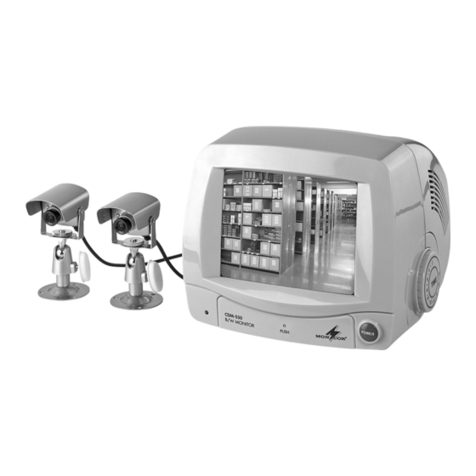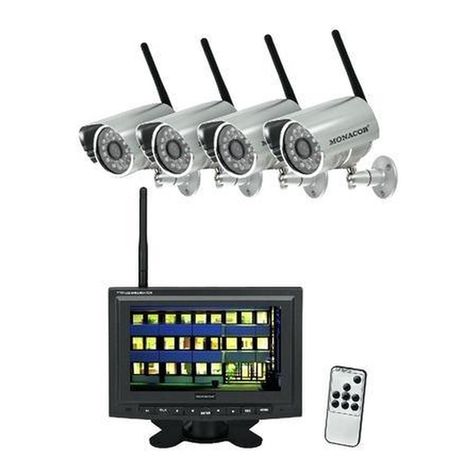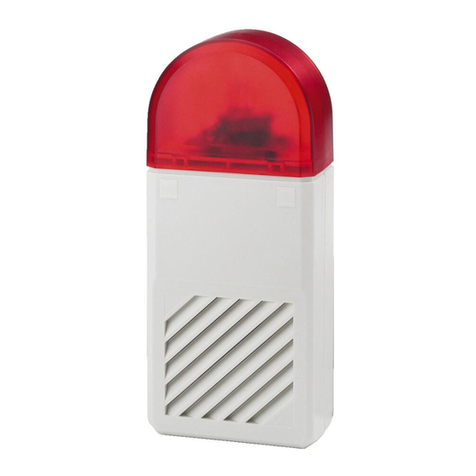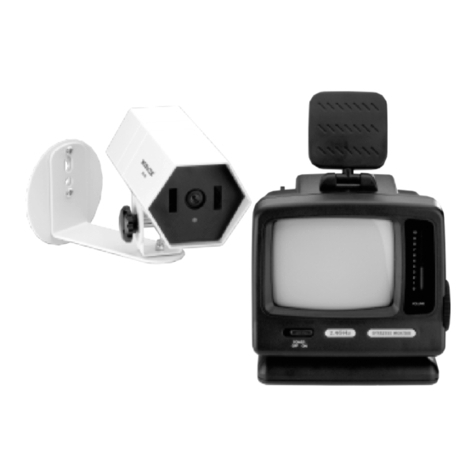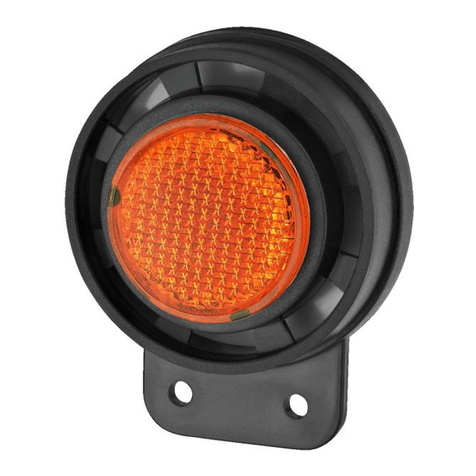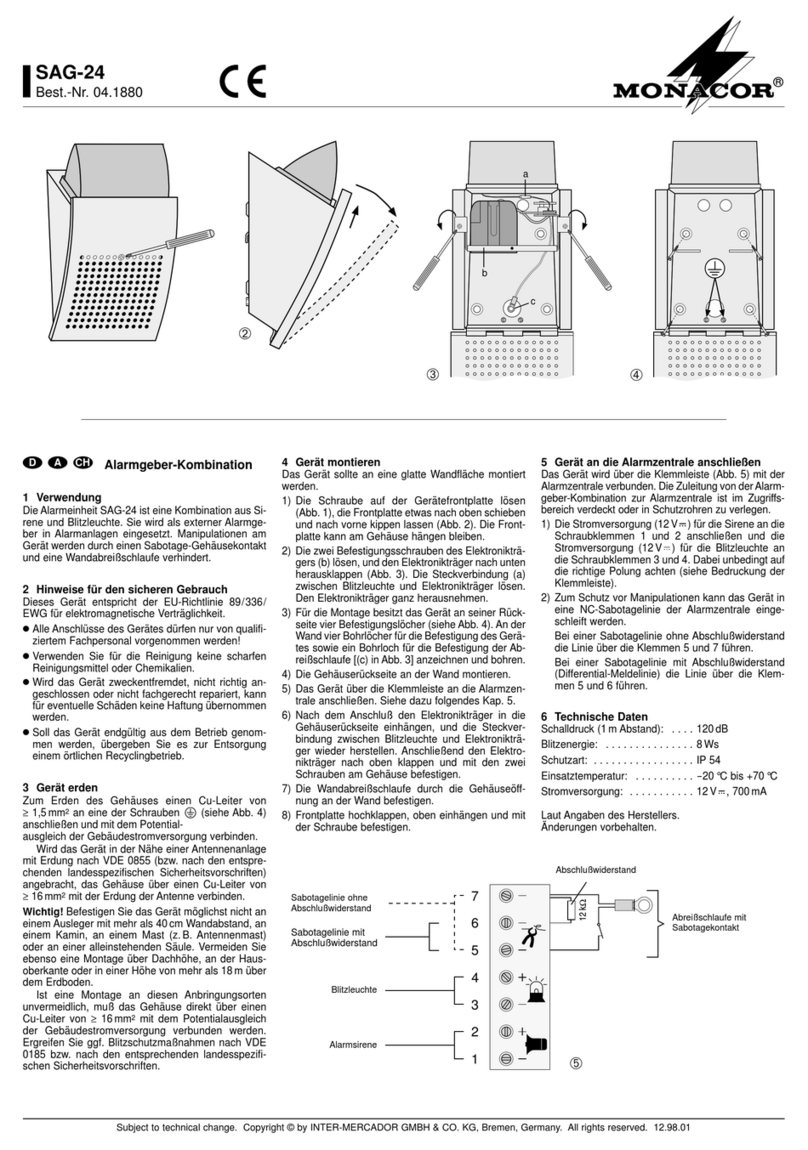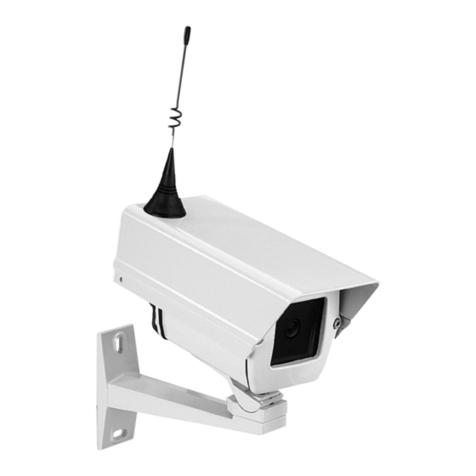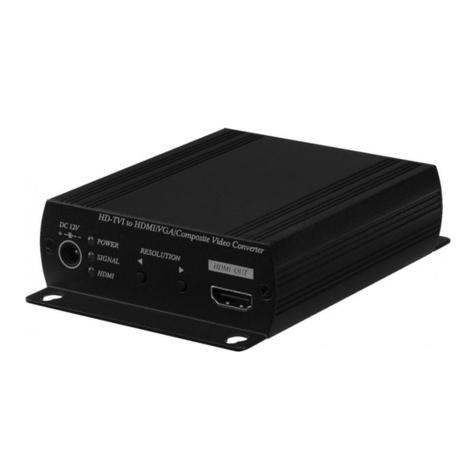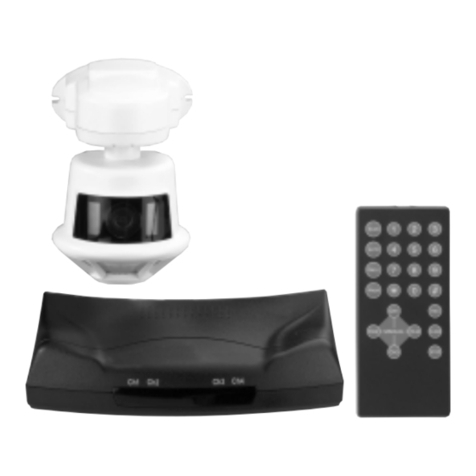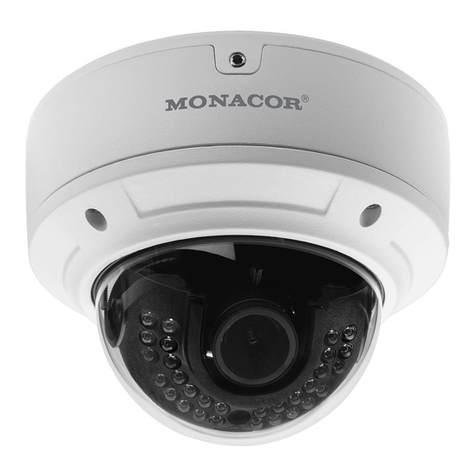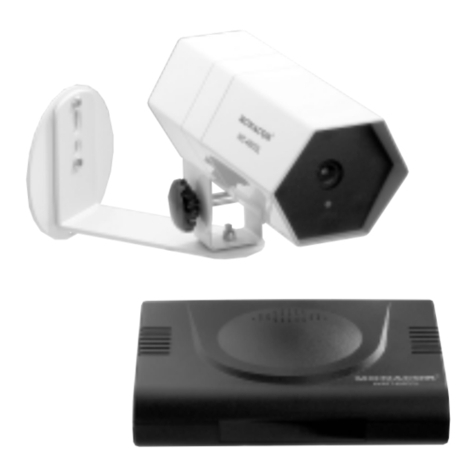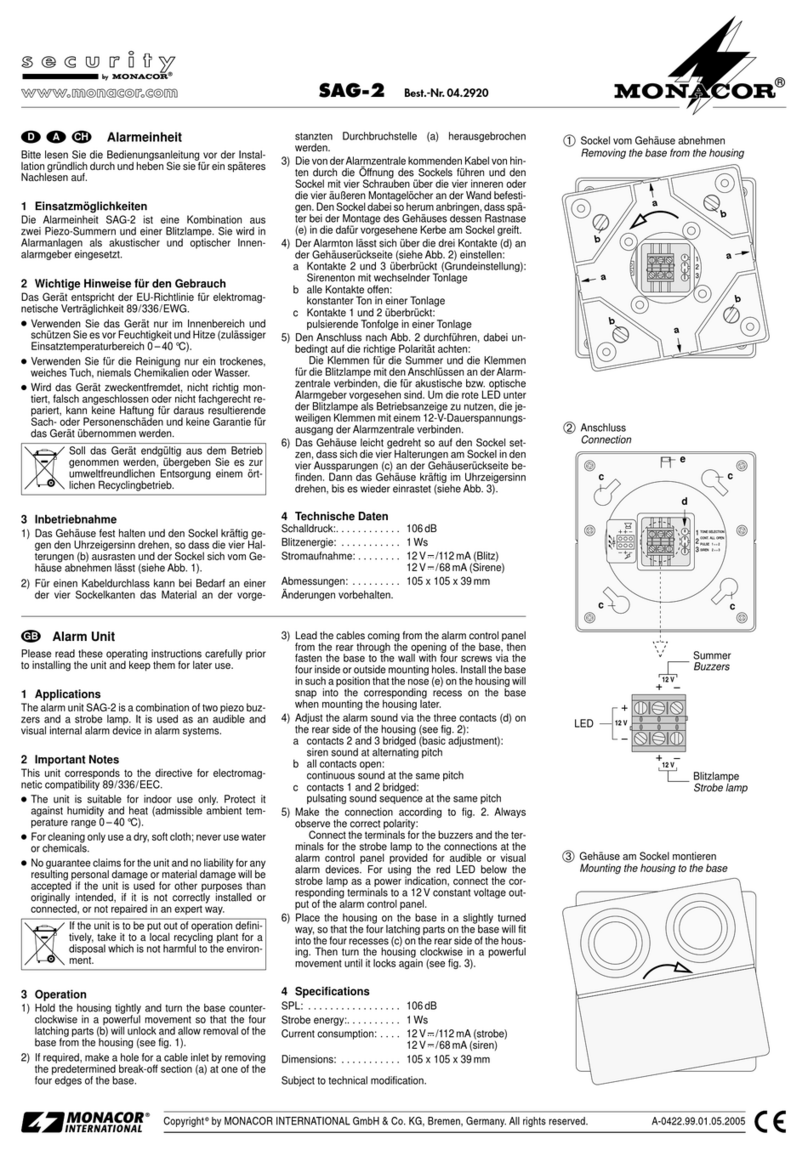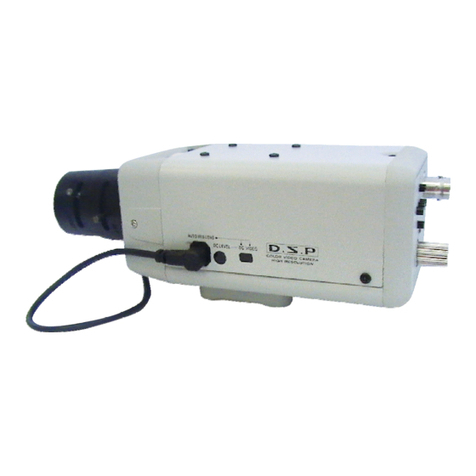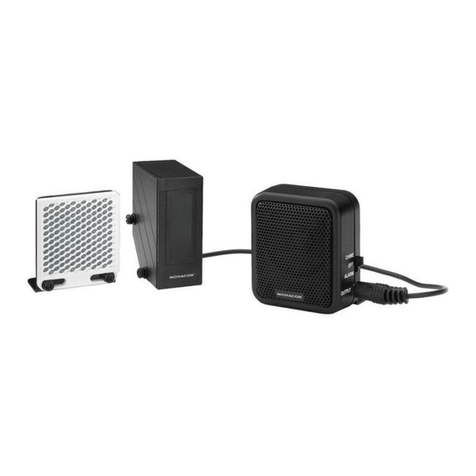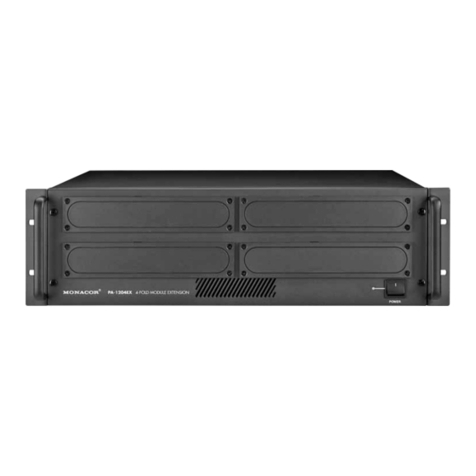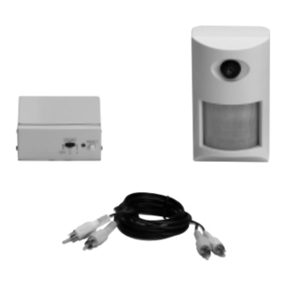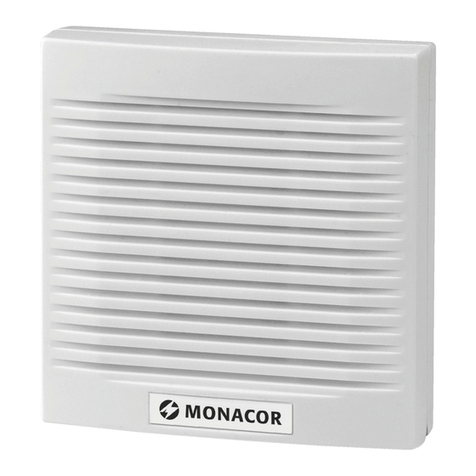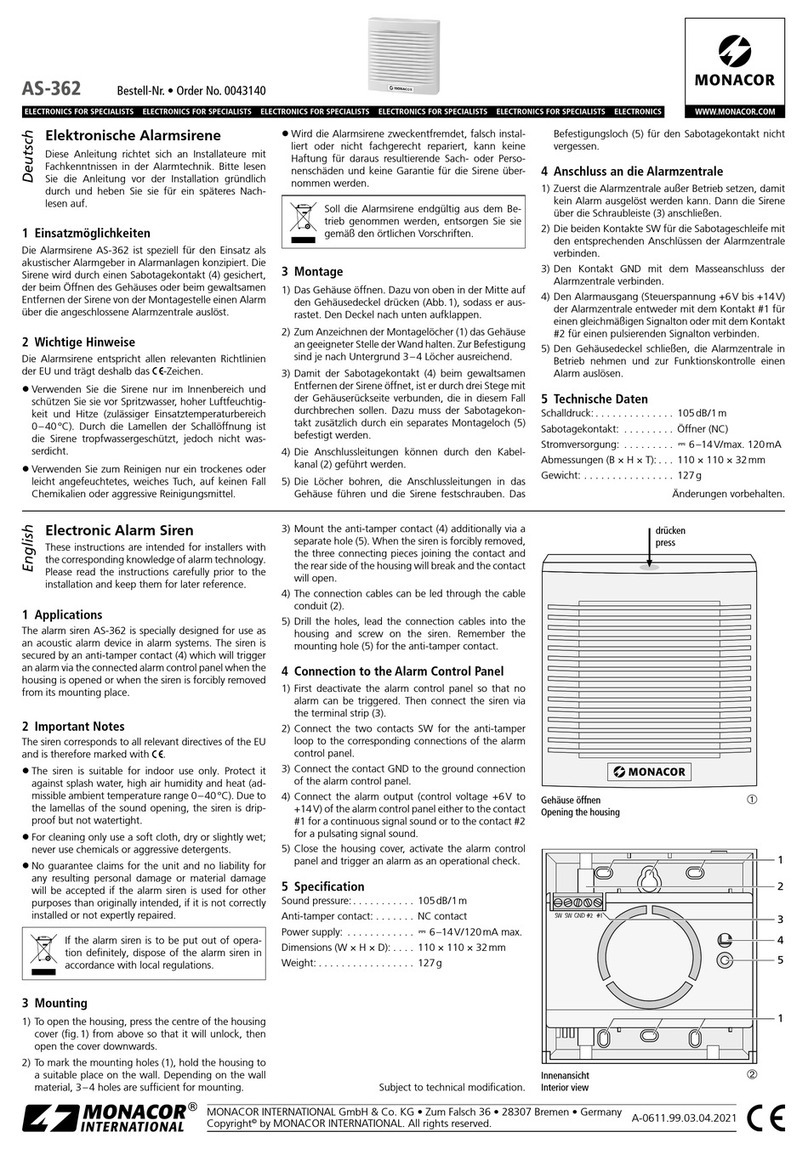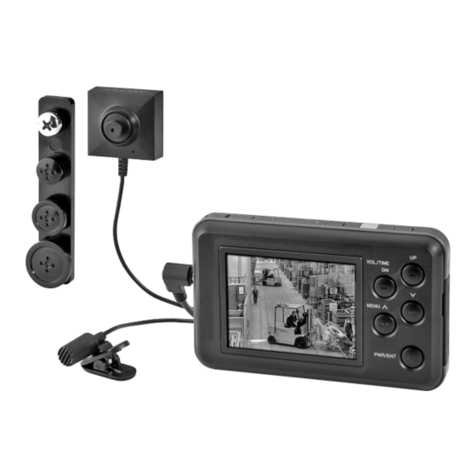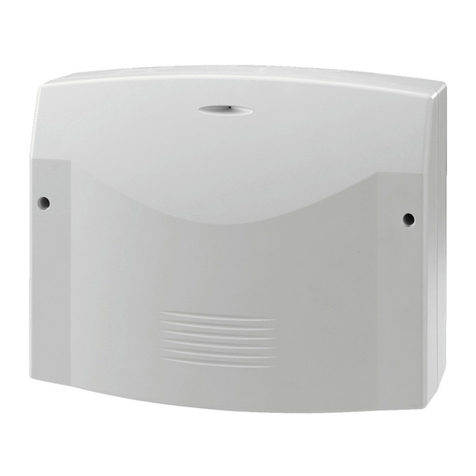Unidades de alarma
Por favor, lea estas instrucciones atentamente antes de
instalar la unidad y guárdelas para usos posteriores.
1Aplicaciones
Estas unidades de alarma sirven como dispositivos seña-
lizadores en sistemas de alarma:
SAG-40 alarma audible mediante sirena piezo
SAG-42 alarma audible y visible mediante sirena piezo y
luz estroboscópica
Las unidades de alarma están indicadas para usos en
interior y exterior. La caja está hecha resistente a los gol-
pesy de poli-carbonatoresistente a losrayos ultravioletas.
2Notas importantes
Esta unidad responde a todas las Directivas requeridas
por la UE y por lo tanto está marcado con .
●Proteja la unidad de las temperaturas extremas (campo
de temperatura ambiente admitida
-
10°C a +50°C).
●No se aceptará ninguna reclamación para la unidad ni
responsabilidad alguna por daños personales o mate-
riales si la unidad es usada para fines distintos a aquel
para el que fue pensada originalmente, si no es correc-
tamente instalada, o si no es reparada de manera
experta.
3Instalación
1) Para abrir la unidad de alarma, primero apriete con
fuerza la parte de arriba de la caja (3) ligeramente
hacia abajo de manera que se pueda sacar (flecha A
en el dibujo 1).
2) Sujete la parte de abajo de la caja (4) a la zona de
montaje deseada, marque la posición de los agujeros
perforados (5), luego perfore los agujeros. Si se nece-
sitauna fijación adicional,perfore los puntosde ruptura
predeterminados (11).
Si la unidad debe ser retirada del funcio-
namiento definitivamente, llévela a un centro
de reciclaje local para su eliminación no
dañina para el medio ambiente.
3) Conduzca los cables para que vayan desde el panel de
controlde alarma desdeatrás através dela abertura (8).
4) Atornille la parte más baja de la caja a la pared.
5) Sujete los cables de conexión al asa (7) mediante un
clip de cable. Para facilitar el manejo, saque el módulo
de conexión (9) moviendo sus cierres (6).
6) Haga la conexión de acuerdo con la imagen 3.
Observe siempre la polaridad correcta, de otro modo
será imposible el funcionamiento debido a los diodos
protectores internos conectados en serie.
Conecte el bucle anti-manipulaciones a los termi-
nales 5 y 6 [contacto anti-manipulaciones (13) = con-
tacto NC] y las conexiones de sirena (10) a los termi-
nales 3 (polo negativo) y 4 (polo positivo). SAG-42:
Adicionalmente conecte las conexiones de luz estro-
boscópica a los terminales 1 (polo negativo) y 2 (polo
positivo).
7) Desplace la parte más alta de la caja unos 5mm lige-
ramente hacia abajo sobre la parte inferior y empuje
hacia arriba (flecha B en figura 1).
8) Compruebe la función de la unidad de alarma.
En caso de condensación de agua acumulada den-
tro de la cubeta, saque la pieza de ruptura predetermi-
nada (12). Modelo SAG-42: Si la unidad de alarma se
instala en un lugar protegido contra la intemperie, se
puede hacer un agujero en lo alto de la cúpula roja, o
bien adicionalmente o bien alternativamente.
9) Finalmente sujete la parte más alta de la caja mediante
los dos tornillos (1) entregados e inserte los cierres (2).
4Características técnicas
Nivel de presión de sonido: > 100dB
Energía del estroboscopio:. 2,5Ws
Alimentación
estroboscopio:. . . . . . . . . 12V /200mA
sirena:. . . . . . . . . . . . . . . 12V /370mA
Dimensiones, peso
SAG-40: . . . . . . . . . . . . . 110 x 200 x 65mm, 450g
SAG-42: . . . . . . . . . . . . . 110 x 260 x 65mm, 500g
Sujeto a modificaciones técnicas.
Urządzenia alarmowe
Przed użyciem urządzenia należy dokładnie zapoznać się
z instrukcją obsługi i zachować ją do późniejszego wglądu.
1Zastosowanie
SAG-40 i SAG-42 służą jako urządzenia sygnałowe w
systemach alarmowych.
SAG-40 alarm akustyczny – syrena piezoelektryczna
SAG-42 alarm akustyczny i świetlny – syrena piezoelek-
tryczna i lampa sygnałowa
Urządzenia alarmowe SAG-40 i SAG-42 są przystoso-
wane do montażu zarówno w pomieszczeniach, jak i na
zewnątrz. Obudowa urządzeń została wykonana z poli-
węglanu, dzięki czemu jest odporna na uderzenia i
działanie promieniowania UV.
2Bezpieczeństwo użytkowania
Ponieważ urządzenie spełnia wymogi norm obowiązu-
jących w Unii Europejskiej, jest oznaczone symbolem .
●Należy chronić urządzenie przed wpływem bardzo
wysokich, bądź bardzo niskich temperatur (dopuszcz-
alny zakres temperatur: od
-
10 °C do +50 °C).
●Nie ponosi się odpowiedzialności za uszkodzenie
sprzętu lub obrażenia użytkownika w przypadku, gdy
urządzenie jest wykorzystywane w innych celach niż to
się przewiduje, jeżeli zostało nieprawidłowo podłączone,
lub jeśli zostało poddane nieautoryzowanej naprawie.
3Montaż
1) W celu otwarcia urządzenia należy zdecydowanym
ruchem przesunąć górną część obudowy (3) odrobinę
w dół, aby można ją było zdjąć (strzałka A na rys. 1).
2) Należy przymierzyć dolną część obudowy (4) do mie-
jsca, w którym urządzenie ma zostać zamontowane,
zaznaczyć rozmieszczenie otworów (5), następnie
wywiercić otwory. Jeśli potrzebne jest dodatkowe
zabezpieczenie montażu, należy przewiercić prze-
znaczone do tego punkty (11).
3) Należy przeprowadzić przez otwór (8) przewody wycho-
dzące z panelu sterującego w tylnej części urządzenia.
Jeśli urządzenie ma zostać ostatecznie
wycofane z użycia, należy przekazać je do
punktu utylizacji odpadów, aby uniknąć
zanieczyszczenia środowiska.
4) Należy przykręcić do ściany dolną część obudowy.
5) Należy przymocować kable połączeniowe do ucha
(7), używając zacisku kablowego. W celu ułatwienia
pracy można odblokować zatrzaski (6) i usunąć
moduł połączeniowy (9).
6) Należy podłączyć urządzenie zgodnie z rys. 3. Należy
zwrócić uwagę na odpowiednią polaryzację, w przeci-
wnym razie praca urządzenia będzie niemożliwa,
dzięki wewnętrznym diodom zabezpieczającym
połączonym szeregowo.
Należy podłączyć pętlę zabezpieczającą przed
nieuprawnionym manipulowaniem przy urządzeniu
do końcówek 5 i 6 [styk zabezpieczający przed nieu-
prawnionym manipulowaniem (13) = styk rozwierny]
oraz złącza syreny (10) do końcówek 3 (biegun
ujemny) i 4 (biegun dodatni). SAG-42: Należy dodat-
kowo podłączyć złącza lampy sygnałowej do
końcówek 1 (biegun ujemny) i 2 (biegun dodatni).
7) Należy umieścić górną część obudowy na dolnej
części, która jest lekko przesunięta w dół o około
5mm, następnie należy przesunąć ją w górę (strzałka
B na rys. 1).
8) Należy sprawdzić, czy urządzenie pracuje prawidłowo.
Jeśli wewnątrz obudowy będzie gromadzić się
woda, należy usunąć element bezpiecznikowy (12).
Model SAG-42: Jeśli urządzenie jest zainstalowane w
miejscu, które chroni je przed wpływem czynników
atmosferycznych, można zrobić otwór na szczycie
czerwonej kopuły (dodatkowo lub alternatywnie).
9) Należy przymocować górną część obudowy za
pomocą dwu śrub (1) wchodzących w skład
wyposażenia, następnie nałożyć uszczelki (2).
4Dane techniczne
SPL: . . . . . . . . . . . . . . > 100 dB
Zużycie energii
przez lampę: . . . . . . . 2,5 Ws
Zasilanie
lampa sygnałowa:. . 12 V /200 mA
syrena: 12 V /370 mA
Wymiary, waga
SAG-40: . . . . . . . . . 110 x 200 x 65 mm, 450 g
SAG-42: . . . . . . . . . 110 x 260 x 65 mm, 500 g
Z zastrzeżeniem do możliwych zmian.
